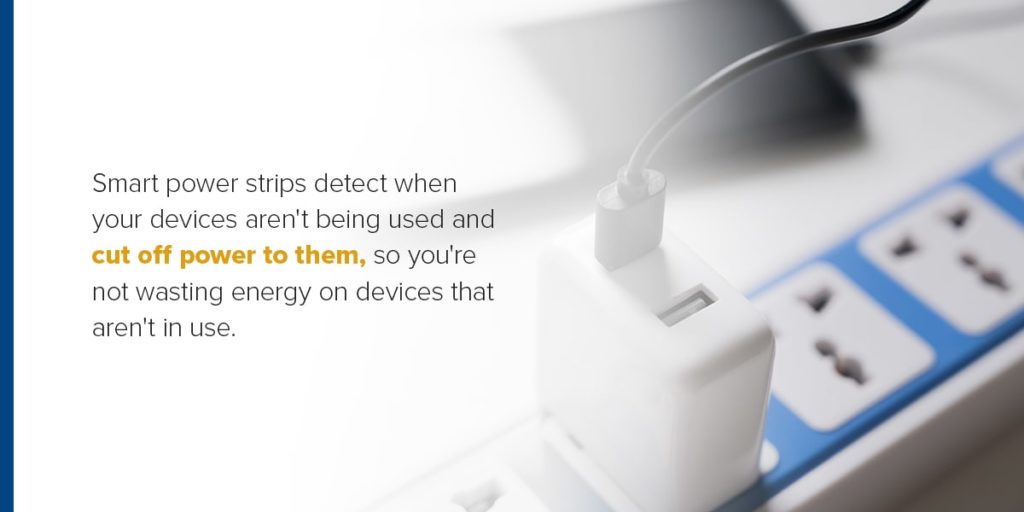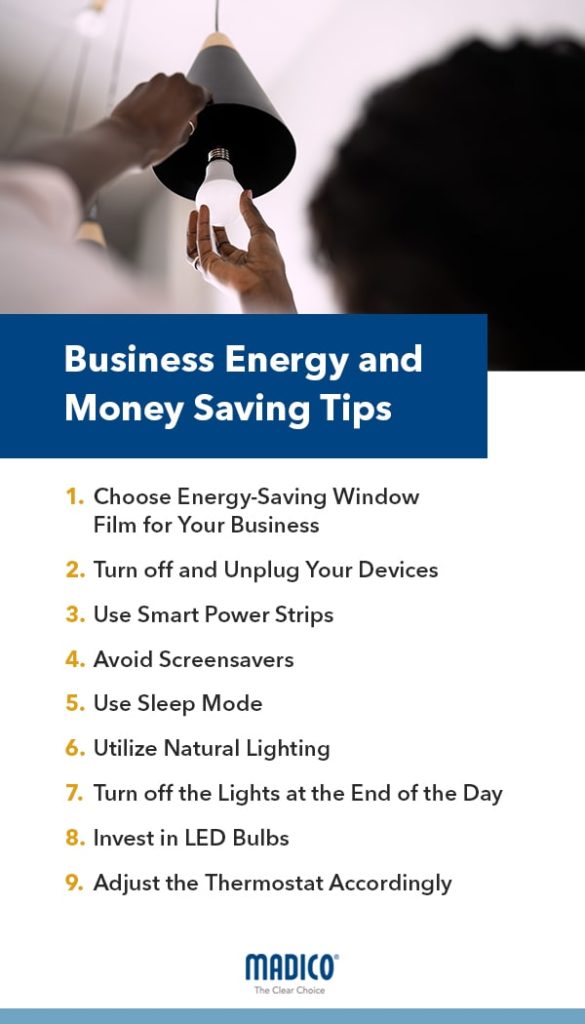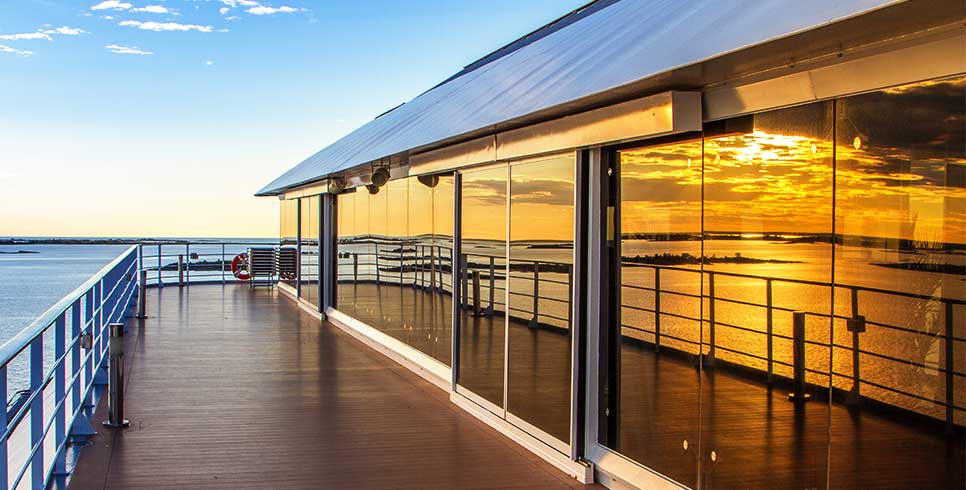
In today’s world of rising prices, finding cost-efficient solutions to everyday problems is crucial. We’re all looking for ways to save money on our energy bills at home and work. Whether you’re looking to invest in technology that will save you money and energy in the long run or just trying to make a difference in your everyday life with small energy-saving acts, this comprehensive list will provide you with tips to save money for your home and business.
Home Energy and Money Saving Tips
Your home sees a lot of activity, much of it coming from devices and appliances you use every day. From charging your phones and computers to running the dishwasher after family dinners, your energy bill reflects the energy you use. If you’re trying to figure out how to save energy at home and cut down on your electricity bill, these tips will help you get started.

1. Choose Energy-Saving Window Film for Your Home
Windows can affect the aesthetic of your home, but did you know they can impact the cost of your home, too? Windows let in natural light, create glares, wash out furniture, let in ultraviolet (UV) rays and even increase your energy bill. By adding energy-efficient window film to your home’s windows, you can decrease your risk of UV exposure, extend the longevity of your furniture and, most importantly, save money on energy costs.
Residential heat control window films can cut down heat in the summer and reflect it back into your home in the winter. This light and heat regulation helps you enjoy reduced energy bills and a more comfortable home during the summer and winter months. Every homeowner’s style is different, but there are a diverse array of window tints available that can reflect your style while also reflecting heat so you can conserve energy.
See some of the ways solar control window films can help you save energy:
- Reflective: Reflective Silver and Optivision® Reflective tints are designed to keep your home more comfortable by providing interior and exterior reflectivity. Reflective tints can minimize glare and offer privacy without obstructing your views, and they block up to 80% of heat from the sun.
- UV protection: Protect yourself and your family from the harmful effects of UV rays with UV Gard tint. This special-purpose film filters out 99% of UV rays while still allowing the maximum amount of light into your home.
- Stylish and functional: Premium residential window films allow you to save energy at home without sacrificing your personal style. Find energy-efficient window films that can reduce heat, minimize glare or create a soft, natural appearance.
- U.S. Federal Tax Credits: Up to $600 in tax credits is available to U.S. homeowners, a benefit that was recently extended through 2032.
2. Switch to a Tankless Water Heater
According to Energy Saver, tankless water heaters can be 24%-34% more energy-efficient than storage tank heaters. Tankless water heaters provide hot water only when needed and heat water instantaneously, eliminating standby heat and energy losses associated with traditional storage water heaters. While tankless water heaters have a higher initial cost than storage water heaters, they are more cost-efficient in the long run, have lower operating costs and tend to last longer.
3. Use Smart Thermostats
Smart thermostats are incredibly intuitive, regulating your home’s temperature on their own. Software algorithms in smart thermostats observe your family’s comings and goings and use that information to adjust your heat and air conditioning (AC) automatically. By recognizing when heating and cooling aren’t necessary, like when you’re not home, your smart thermostat can save electricity, bringing down heating and cooling costs.

4. Utilize Smart Power Strips
Your devices — like laptops, TVs and cable boxes — consume energy even when turned off or in sleep mode. Like smart thermostats, smart power strips can sense when energy isn’t needed to power something. Smart power strips detect when your devices aren’t being used and cut off power to them, so you’re not wasting energy on devices that aren’t in use.
5. Use Ceiling Fans
While this home energy-saving tip may seem strange, hear us out. Ceiling fans use significantly less energy to run compared to an AC unit, but simply buying a ceiling fan isn’t going to save your energy costs. Purchasing a ceiling fan that’s the appropriate size for the room you’re using it in will ensure it performs at maximum capacity. Large ceiling fans require less energy to create a more substantial amount of airflow, making them better suited for open spaces, whereas a smaller ceiling fan will exert more energy to complete the same task.
6. Consider Adding Solar Panels
Solar panels provide your home with a natural energy source and require little maintenance or upkeep. Like tankless water heaters, solar panels are costly up front but can bring a major return on investment in no time. Especially if you live in an area with high energy rates, solar panels could be a fantastic energy-saving investment for your home.
7. Conduct a Home Energy Audit
Save money and energy by having a home energy audit on your house. Home energy audits can give you a detailed report of where energy is being lost in your home, how efficiently or inefficiently systems and appliances are operating and how you can better save money and energy. These audits are usually done through your local utility company and are offered in two forms:
- Basic energy analyses are the perfect budget-friendly option for identifying energy inefficiencies within your home. During a basic energy audit, a certified technician will inspect window and door air leaks, appliances’ age and condition, electrical device usage and much more.
- Comprehensive energy audits are more expensive but include a basic energy analysis along with other tests. Comprehensive energy audits include testing for duct leakage, wood moisture, mold and asbestos checks and thermal imaging scans. Their detailed results can help you more accurately pinpoint areas of your home where energy is being lost and where efficiency can be optimized.
8. Make Little Adjustments to Everyday Life
If you’re not looking to invest money into gadgets that’ll cut energy costs, there are still some ways to save energy at home without breaking the bank. These home energy-saving tips can be incorporated into your daily life and put you on track toward a lower energy bill:
- Turn off your lights: When you were younger, you may have rolled your eyes when someone scolded you for leaving the lights on. As annoying as it might have been back then, turning off the lights when they’re not needed can save your home a significant amount of energy. You can purchase timers and motion detectors to ensure you’re using your lights efficiently.
- Limit oven and stove use: Save money in your kitchen by cutting down on your oven and stove use. Limit pre-heating times to avoid using extra energy and repeatedly opening it to check on your food. Your oven’s temperature can drop approximately 25 degrees each time you open the door, so it’ll need to use more energy to get the temperature back up to normal.
- Hang clothes to dry: Your dryer uses energy to produce heat to dry your laundry. You can run your dryer less often by hanging your close out to dry, especially during the spring and summer. If you can’t let your laundry air dry, make sure to always keep your dryer’s lint screen clean so it can run more efficiently.
- Hand wash dishes: When possible, hand wash your dishes to save money on the energy needed to heat water for your dishwasher to run. If you don’t have the time to hand wash them, only run your dishwasher when you have a full load to minimize the number of times you run it. Consider letting your dishes air dry by cracking open the door rather than leaving it on for the drying cycle.

Business Energy and Money Saving Tips
Businesses are incredibly reliant on technology to keep things running smoothly. Your computers, monitors, copiers, modems and in-office lighting all require electricity, so it’s no surprise that businesses have hefty energy bills. As a business owner, there are quite a few ways to conserve energy and save money.
1. Choose Energy-Saving Window Film for Your Business
Your office building’s windows offer your employees a portal to the outside world while working indoors for most of the day. Especially now, floor-to-ceiling windows give your office building a sleek, modern look that makes the interior workspace feel open and inviting. While those beautiful floor-to-ceiling views offer your employees a brief respite during the busy workday, they’re also letting in harmful UV rays and natural sunlight that can create annoying glares on computer screens, disrupting workflow.
By installing commercial UV-blocking window film on your building’s windows, you can regulate your office’s temperature and avoid those pesky thermostat wars. Energy-efficient window films can reduce heat accumulation from natural light and reflect heat inside the office during colder months. You’ll slow fading for your interior furniture and merchandise and save money from potential replacement costs.
Commercial UV-blocking window films offer several benefits to your business, like:
- Privacy: Optivision® Reflective and Reflective Silver films provide external reflection to maintain privacy and lower energy costs while still allowing your team a natural view of the outside.
- Enhanced exterior appearance: Improve the look of your business’ exterior with a professional installation of exterior architectural window films that blend style with functionality. These window tints slow fading and reduce glare while giving your business’ exterior a sleek, uniform look.
- Temperature control: Sunscape® Softlite window films reduce heat within your building to create a comfortable indoor work environment while cutting down on heat and air conditioner costs. These window films offer soft tones that encourage natural lighting in your building.
2. Turn off and Unplug Your Devices
Turning off your devices and unplugging them when they’re not in use is a great way to avoid your devices falling victim to excess energy use. Have employees turn off and unplug computers, monitors and other technologies before they leave the office for the day.
3. Use Smart Power Strips
Smart power strips are an excellent way to conserve your business’s energy usage. Especially in an office setting, smart power strips are a great way to ensure your devices aren’t using unnecessary energy while you’re not at your desk during long lunches or weekends.
4. Avoid Screensavers
While they may look nice when they pop up on your screen, screensavers do not conserve energy. Even when your desktop’s display goes blank, it’s still using energy. When you use a screensaver rather than sleep mode, you’re actually decreasing your computer’s energy efficiency.
5. Use Sleep Mode
Using sleep mode when your computer is inactive is an excellent alternative to screensavers, as it reduces your computer’s electricity usage. Encourage your employees to put their computers in sleep mode if they’re stepping away from their desks for periods of time rather than letting them get to a screensaver.
6. Utilize Natural Lighting
Use daylight to your advantage — turn off the lights and let natural light illuminate your office space when the sun is shining. With the right window film, you can confidently turn off the lights to save energy without worrying about the distracting glare from sunlight streaming through the windows and keep productivity going strong.
7. Turn off the Lights at the End of the Day
Just like at home, turn off the lights when you’re leaving. If you know there will not be anyone in the office until the next work day, turn off the lights to avoid wasting valuable energy. If you have night cleaning crews that come in regularly after hours, consider investing in motion sensor lights that will turn off automatically when no activity is detected.
8. Invest in LED Bulbs
LED lighting can save your business energy in more ways than one. LED lights are popular in commercial and industrial industries because of their high efficiency rating. They use almost 75% less energy than regular incandescent lighting and can last up to 25 times longer. LEDs also produce less heat compared to incandescent and CFL lights, which release up to 90% of their energy as heat.
9. Adjust the Thermostat Accordingly
Turning down your office’s thermostat a few degrees before you leave for the weekend can make a huge difference in your monthly energy bill. If you’re not working during the weekend, your office’s heating and air shouldn’t be either.

Find a Madico® Dealer Today
Madico’s trained professionals are ready to help you choose the right energy-saving window film for your home or business. Our network of Madico dealers can help you protect the inside of your home or business from the sun’s harmful UV rays and slow the fade of furniture and merchandise. If you’re ready to experience the difference Madico can make in your home or business, find a dealer near you today to discuss window film options and schedule an installation.




